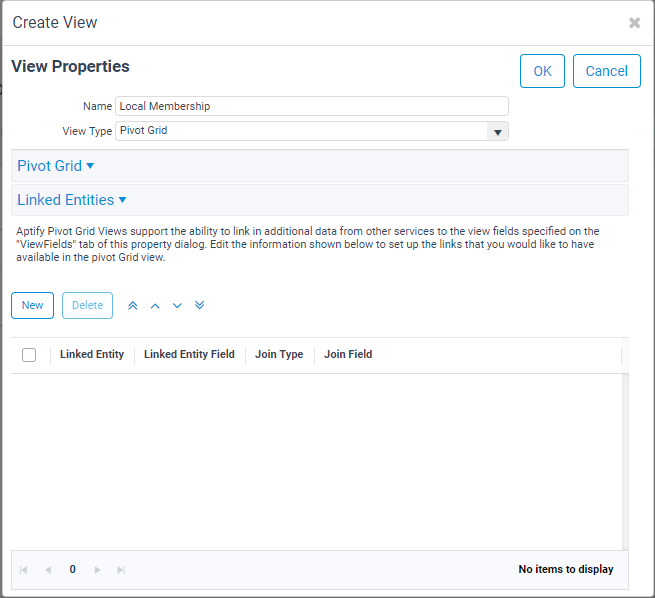- Notice that the tab layout is updated automatically: a new Pivot Grid tab appears in the dialog and the Format, Hierarchy, and Paging tabs are removed.
- Note that not all of the tabs shown below may be available on your system, depending on how your administrator configured the pivot grid view type's properties.
- Note that the Show Default Preview Pane is only applicable to list views.

- For example, if you have created a pivot grid view in the Persons service and have added Orders as a linked entity, by default, the system opens the appropriate Persons record when you double click in a cell. However, you might want the system to open the corresponding Orders record instead. You can specify this preference on the Detail Navigation sub tab.
- See Specifying Detail Navigation Settings for a Pivot Table for details.
Click the Filters tab to specify filter criteria for the view. See Defining View Filters for instructions on creating filter statements.
Pivot grid views do not support multiple currencies in a single view. Any pivot grids that will include money-based data will need to be filtered to a single currency. The following limitations apply when creating pivot grids with money-based data:
|
Any other type of prompt view filter can be used in pivot grid views. |
- Note that the ability to change a field's display name in a view (described in Changing the Display Name of a Field) is not applicable to pivot grids.
If you want to modify the SQL statement that defines the information available in the pivot grid, click the Advanced > SQL tab and edit the SQL statement as needed. See Editing the SQL for Views for details.
If you want to schedule this view to be run automatically, click the Scheduling tab and enter the desired settings. See Scheduling a View to Run Automatically for details.